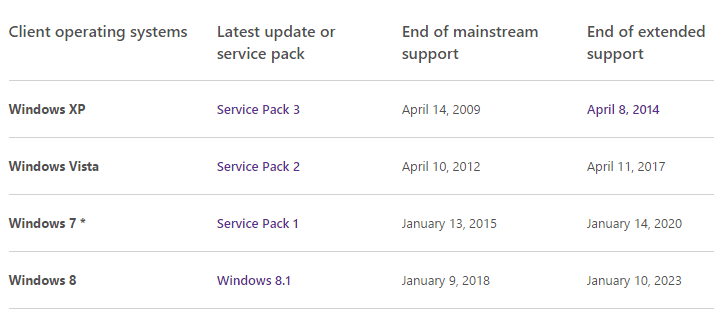This means that, if you are using Windows 7, Microsoft will no longer provide free help for the problems faced by you. It will also not release any new features for Windows 7. Windows 7, which was introduced in 2009 quickly gained popularity due to its comfortable UI and user friendly options. It sold over 100 million copies in six months after release and still remains hugely popular. Windows 7 was more stable than predecessor Windows Vista and added rich features for users which surged its popularity as well as usage. Microsoft introduced its successor, Windows 8 and subsequent updates with a radical change in the user interface. Because of the radical changes in the graphic interface, Windows 8 has not found the widespread acceptability of Windows 7 and it is estimated half of the world’s PCs run on Windows 7 as of today. As Microsoft looks to push through the new avatar of its operating system, the Windows 10, it will henceforth charge you for the help or extended support it provides. The extended support which is chargeable ends on 14th Jan, 2020.
However Microsoft will continue issuing security fixes and patches for vulnerabilities and flaws discovered by security researchers. However over the years it is found that once Microsoft withdraws support for its product, the cyber criminal community slowly and progressively avoid that particular product. Only in rare cases, you will find cyber criminals exploiting Windows XP or Windows 98 vulnerabilities today. It is not known why Microsoft chose not to name its successor to Windows 8 as Windows 9 but directly went to 10. The Technical Preview Edition of Windows 10 was released to programmers, security researchers, tech geeks and hobbyists in November 2014 and the final version will be available in second half of this year. Microsoft is set to make a mega announcement about Windows 10 on January 21 2014 and it is hoped that Microsoft will stick to the old style Windows 7 UI instead of radical Windows 8 one. Windows 8 free help and extended support will end on 9th January, 2018 and it will be totally ditched on January 10, 2023. You can read more about Windows lifecycle here.
